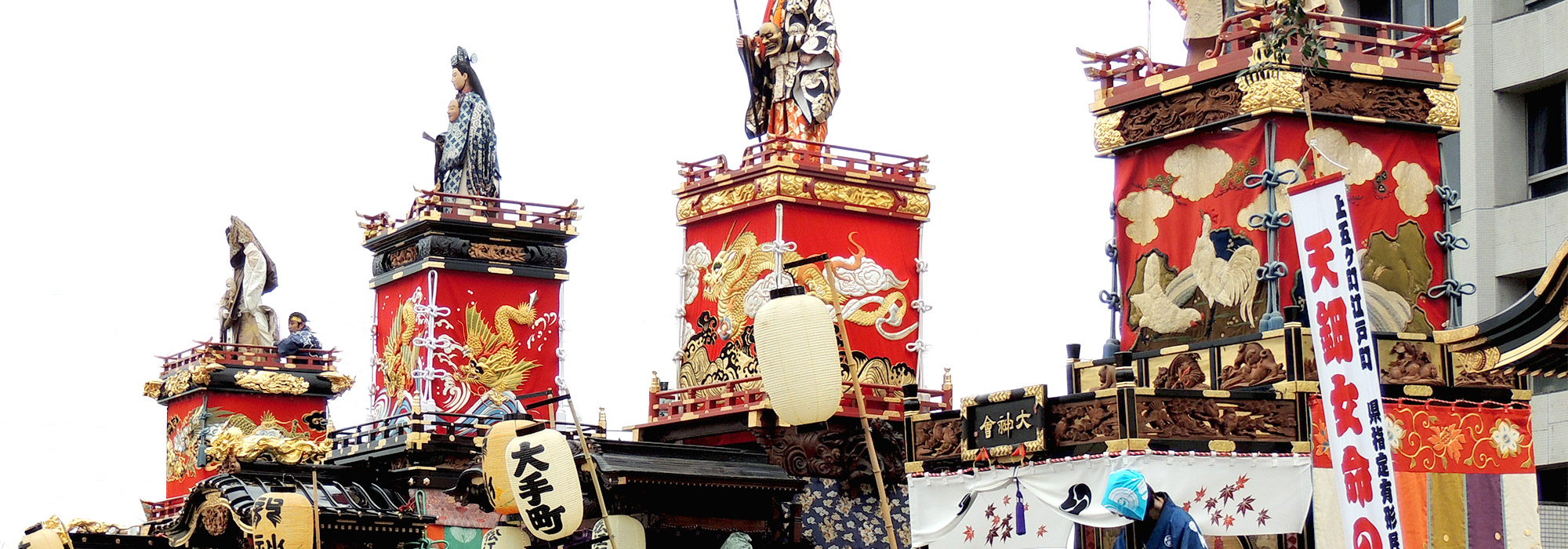
About / History
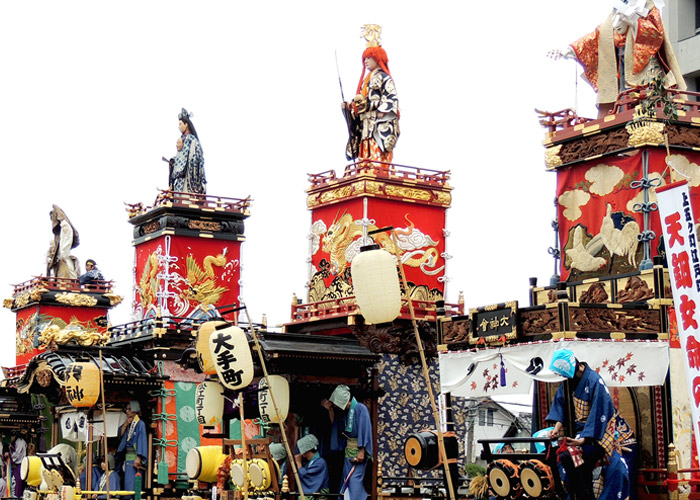
About / History
About / History | UNESCO Intangible Cultural Heritage
About / History | UNESCO Intangible Cultural Heritage
Held for two days on the 3rd Saturday and Sunday of October,
the Kawagoe Festival is Koedo-Kawagoe's liveliest event of the year.
Famed for its Kurazukuri (traditional architecture) zone, this city is one of the Kanto Region's foremost sightseeing spots,
and it attracts large numbers of visitors each year.
the Kawagoe Festival is Koedo-Kawagoe's liveliest event of the year.
and it attracts large numbers of visitors each year.
Held for two days on the 3rd Saturday and Sunday of October,
the Kawagoe Festival is Koedo-Kawagoe's liveliest event of the year.
the Kawagoe Festival is Koedo-Kawagoe's liveliest event of the year.
A musical battle between spectacular festival floats
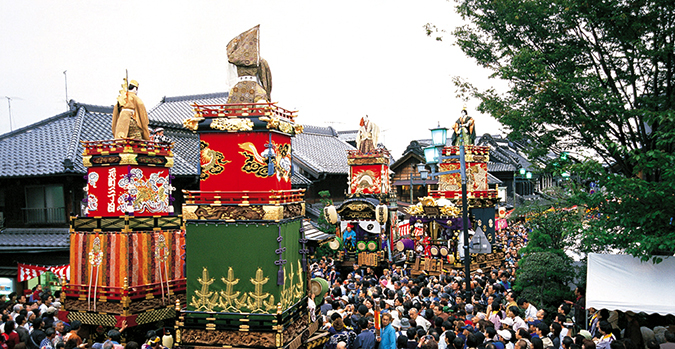
The Kawagoe Festival's strongest feature is the festival float event which reproduces the ’Edo Tenka Matsuri’ festival.
Spectacular festival floats carrying exquisitely crafted dolls are pulled around the center of Koedo-Kawagoe’s landmark Kurazukuri (traditional architecture) Zone.
Spectators will be overwhelmed by the sheer scale of the many festival floats as they pass by each other when meeting at an intersection.
Spectacular festival floats carrying exquisitely crafted dolls are pulled around the center of Koedo-Kawagoe’s landmark Kurazukuri (traditional architecture) Zone.
Spectators will be overwhelmed by the sheer scale of the many festival floats as they pass by each other when meeting at an intersection.
The main event - ‘Hikkawase’
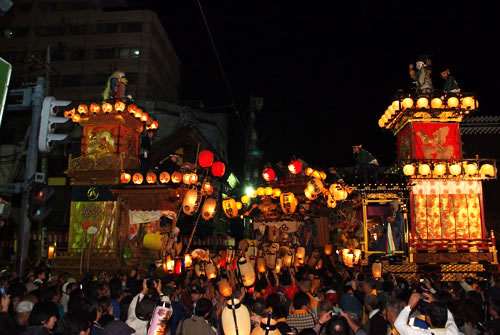
The Kawagoe Festival’s biggest highlight: ‘Hikkawase’
As they face each other, the several festival floats compete with each other in a hayashi performance (a traditional Japanese orchestra comprised of flutes, drums, handbells and dancing), cheered on by the excited voices of festival-goers holding aloft paper lanterns.
The excitement reaches its climax with the evening ‘Hikkawase’.
As they face each other, the several festival floats compete with each other in a hayashi performance (a traditional Japanese orchestra comprised of flutes, drums, handbells and dancing), cheered on by the excited voices of festival-goers holding aloft paper lanterns.
The excitement reaches its climax with the evening ‘Hikkawase’.
A musical battle between spectacular festival floats

The Kawagoe Festival's strongest feature is the festival float event which reproduces the ’Edo Tenka Matsuri’ festival.
Spectacular festival floats carrying exquisitely crafted dolls are pulled around the center of Koedo-Kawagoe’s landmark Kurazukuri (traditional architecture) Zone.
Spectators will be overwhelmed by the sheer scale of the many festival floats as they pass by each other when meeting at an intersection.
The main event - ‘Hikkawase’

he Kawagoe Festival’s biggest highlight: ‘Hikkawase’
As they face each other, the several festival floats compete with each other in a hayashi performance (a traditional Japanese orchestra comprised of flutes, drums, handbells and dancing), cheered on by the excited voices of festival-goers holding aloft paper lanterns.
The excitement reaches its climax with the evening ‘Hikkawase’.
Folk Cultural Property
In 2005, the festival was designated as a National Important Intangible Folk Cultural Property under the title of ‘Kawagoe Hikawa Festival Float Event’
In 2016 it was registered as a UNESCO Intangible Cultural Heritage under the title of ‘Kawagoe Hikawa Festival Float Event.
of the Chinju-Hikawa Festival by the Kawagoe Castle lord.
‘The Pinnacle of Town Festivals’, this over 370-year-old event preserves the style of the Edo "Tenka Matsuri" festival The origin of the festival dates back to the first year of the Keian Period (1648) with the promotion of the Chinju-Hikawa Festival by the Kawagoe Castle lord.
‘The Pinnacle of Town Festivals’,
this over 370-year-old event
preserves the style of the Edo "Tenka Matsuri" festival
and is also consisted of the "Jinkosai" festival and "Float Event (festival)" that are held immediately afterward.
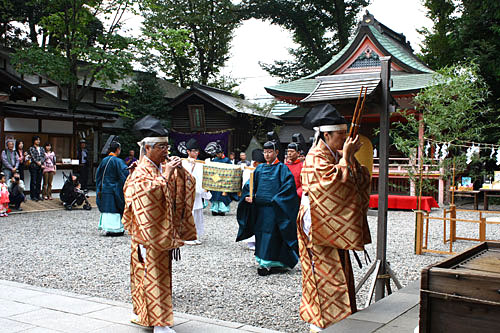
Reitaisai
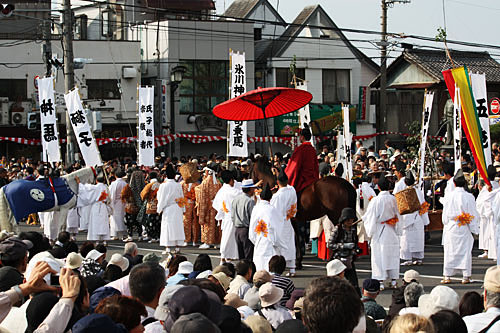
Jinkosai
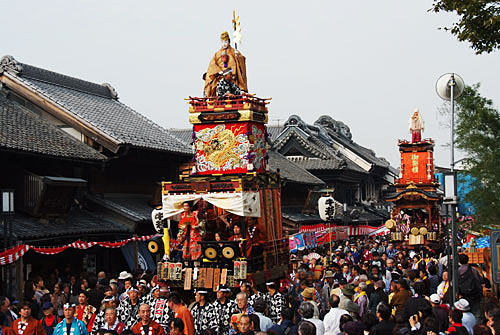
Float Event

Reitaisai

Jinkosai

Float Event
a lion mask and taiko drums to the Hikawa Shrine. From 1651 onward, extravagant processions passed through the neighborhoods of shrine parishes,
and these were soon joined by members of the commercial elite. It is in these rituals and festivals that the Kawagoe Festival takes root.
In the original "Jinkosai" festival, the portable shrine of Hikawa Shrine was carried through the neighborhoods of shrine parishioners, and was accompanied by adornments of floats including costume parades provided by 10 neighborhoods of shrine parishes.
In 1698, one of the 10 neighborhoods, Takazawa-cho, having learned from the Edo festival, displayed the first dancing stage. The dancing stage was the centerpiece of the Edo festival in this period.
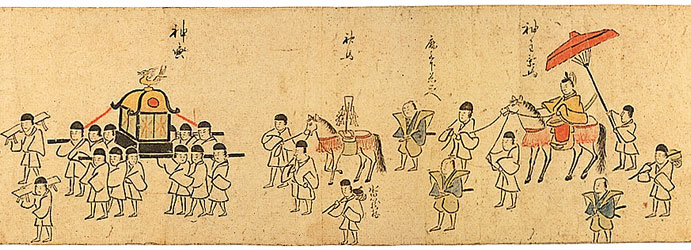
From Kawagoe-hikawa-sairei-emaki (1826)
 From Kawagoe-hikawa-sairei-emaki (1826)
From Kawagoe-hikawa-sairei-emaki (1826)
Development of the Kawagoe Festival through the link to
Edo: boat transport on the Shingashigawa River
Edo: boat transport on the Shingashigawa River
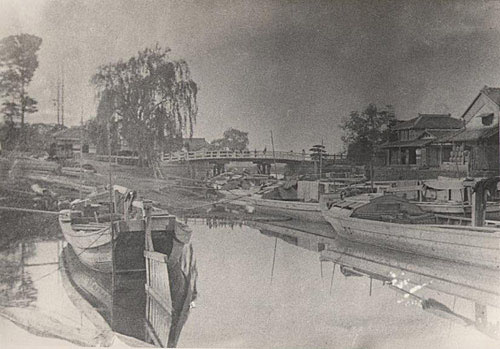
Shingashigawa River Boat Transport
Boat transport on the Shingashigawa River allowed Kawagoe not only to receive the latest fineries and customs that came in from Edo, but also gradually developed the festival.
The present festival ceremonies and customs are said to take root in the arrangements of the Bunka and Bunsei Periods.
The present festival ceremonies and customs are said to take root in the arrangements of the Bunka and Bunsei Periods.
Unification of the festival floats of the
10 neighborhoods in 1844
10 neighborhoods in 1844
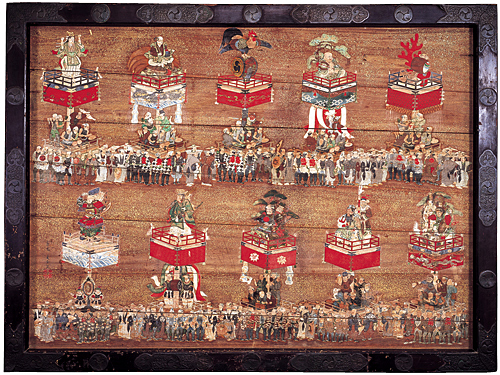
Hikawa-sairei-egaku (1844)
Later on, with the advent of festival floats taking the central role in the Edo Festivals, all the festival floats of the 10 neighborhoods were in 1844 unified in a single-column style and dolls were placed on the balustrades, as they are depicted in Hikawa-sairei-egaku (a votive picture scroll).
Development of the Kawagoe Festival through the link to Edo:
boat transport on the Shingashigawa River
boat transport on the Shingashigawa River

Shingashigawa River Boat Transport
Boat transport on the Shingashigawa River allowed Kawagoe not only to receive the latest fineries and customs that came in from Edo, but also gradually developed the festival.
The present festival ceremonies and customs are said to take root in the arrangements of the Bunka and Bunsei Periods.
Unification of the festival floats of the 10 neighborhoods in 1844

Hikawa-sairei-egaku (1844)
Later on, with the advent of festival floats taking the central role in the Edo Festivals, all the festival floats of the 10 neighborhoods were in 1844 unified in a single-column style and dolls were placed on the balustrades, as they are depicted in Hikawa-sairei-egaku (a votive picture scroll).
Under the divine protection of the Grand Hikawa Shrine, the people of Kawagoe that had brought this castle town to prosperity have proudly developed the Kawagoe Festival by using this economic strength both to maintain a history of over 370 years, as well as add its own unique Kawagoe features.
Under the divine protection of the Grand Hikawa Shrine, the people of Kawagoe that had brought this castle town to prosperity have proudly developed the Kawagoe Festival by using this economic strength both to maintain a history of over 370 years, as well as add its own unique Kawagoe features.



 About/History
About/History